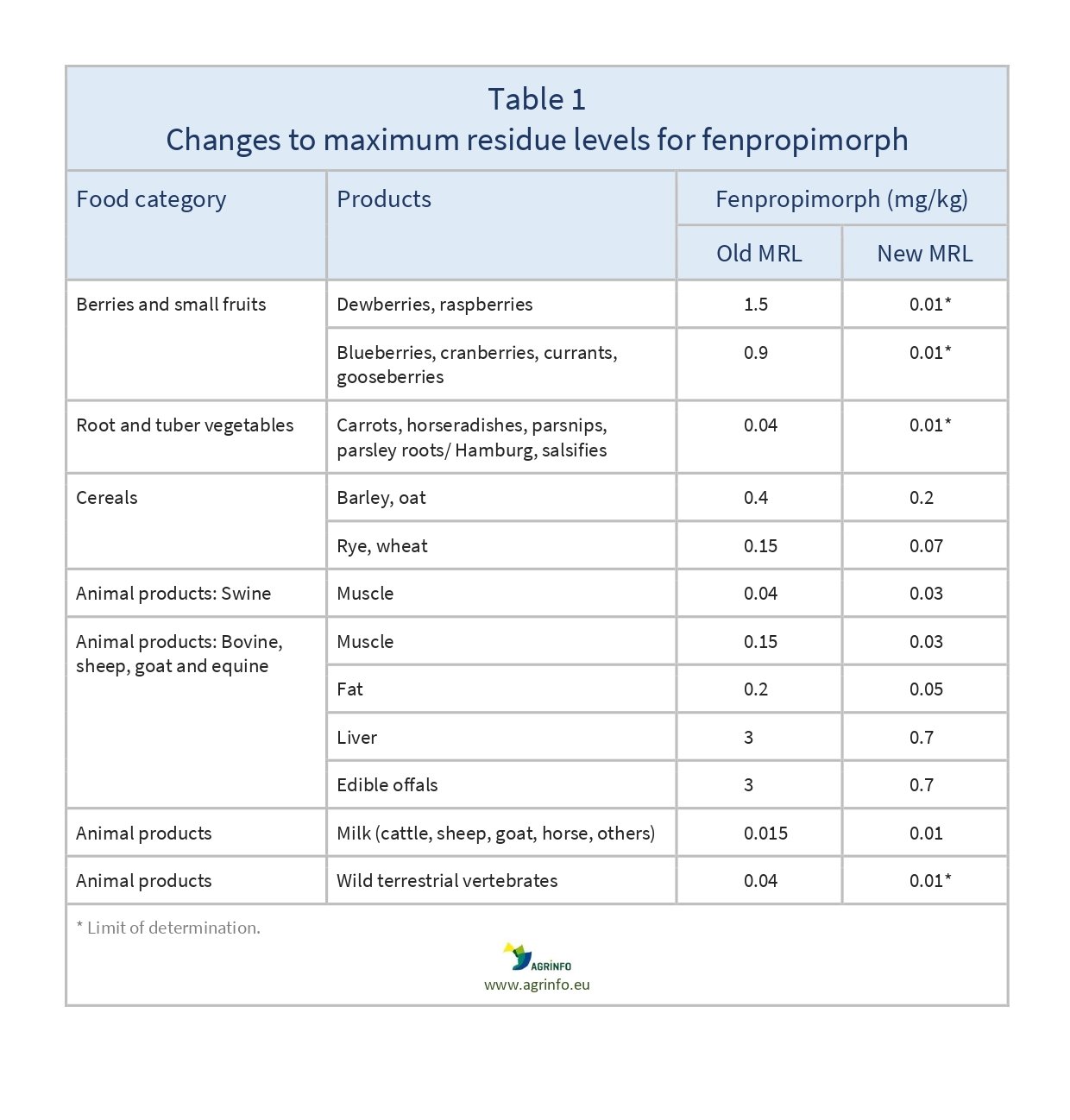Maximum residue levels for fenpropimorph
- Pesticide MRLs
Summary
The European Commission has set the maximum residue levels (MRLs) for fenpropimorph to the limit of determination (LOD, the lowest level that can be detected using the most modern and reliable analytical methods). This applies to all products except bananas – for which an import tolerance MRL is set – and products with MRLs based on Codex maximum residue levels (CXLs) that are safe for consumers.
This will particularly affect exporters of berries and small fruit (cane fruits, dewberries, raspberries, blueberries, currants, gooseberries), roots and tubers (carrots, horseradishes, parsnips, parsley roots, salsifies), cereals (barley, oat, rye, wheat) and animal products.
EU establishes import tolerance MRL on fenpropimorph for bananas and reduces MRLs on all other products, with impacts on exporters of berries and small fruit, roots and tubers, cereals and animal products
Commission Regulation (EU) 2023/710 of 30 March 2023 amending Annexes II, III and V to Regulation (EC) No 396/2005 of the European Parliament and of the Council as regards maximum residue levels for bromopropylate, chloridazon, fenpropimorph, imazaquin and tralkoxydim in or on certain products
Update
The European Commission has set the maximum residue levels (MRLs) for fenpropimorph to the limit of determination (LOD, the lowest level that can be detected using the most modern and reliable analytical methods). This applies to all products except bananas – for which an import tolerance MRL is set – and products with MRLs based on Codex maximum residue levels (CXLs) that are safe for consumers.
This will particularly affect exporters of berries and small fruit (cane fruits, dewberries, raspberries, blueberries, currants, gooseberries), roots and tubers (carrots, horseradishes, parsnips, parsley roots, salsifies), cereals (barley, oat, rye, wheat) and animal products.
Impacted Products
dewberries, raspberries, blueberries, cranberries, currants, gooseberries; carrots, horseradishes, parsnips, parseley roots, Hamburg, salsifies, barley, oats, rye, wheat, sugar beet, animal products
What is changing?
The Commission has changed the MRLs for fenpropimorph as set out in Table 1. Following a request for an import tolerance related to use in Venezuela, the MRL for fenpropimorph on bananas is set at 0.6 mg/kg.
Why?
Fenpropimorph is no longer permitted for use in the EU. The existing MRLs for fenpropimorph have been withdrawn, except for products with MRLs based on import tolerances or on Codex maximum residue limits (CXLs) that are safe for consumers.
CXLs considered to be safe for consumers are set as EU MRLs for sugar beet roots, barley, oats, rye, wheat, animal products and milk.
Timeline
The new MRLs will apply from 21 October 2023.
Recommended Actions
MRLs for fenpropimorph are changing across a wide range of products. Suppliers of fruit, vegetables, cereals and animal products should review existing agricultural practices for use of fenpropimorph.
For all products with the exception of bananas, sugar beet roots, barley, oats, rye, wheat, animal products and milk, the MRL is reduced to the LOD and alternative solutions to the use of fenpropimorph should be found.
Although the MRL is not set to the LOD for the above-mentioned cereal and animal products, it is lowered. Suppliers to the EU market of barley, oats, rye, wheat, animal products and milk should review existing use of fenpropimorph to ensure their products conform with the new reduced fenpropimorph MRLs by October 2023.
Background
MRLs are set in accordance with the rules set out in Regulation 396/2005. For information on current MRLs for other substances, please consult the EU Pesticide Residues database.
Sources
Commission Regulation (EU) 2023/710
Tables & Figures

Source: based on Regulation (EU) 2023/710
Disclaimer: Under no circumstances shall COLEAD be liable for any loss, damage, liability or expense incurred or suffered that is claimed to have resulted from the use of information available on this website or any link to external sites. The use of the website is at the user’s sole risk and responsibility. This information platform was created and maintained with the financial support of the European Union. Its contents do not, however, reflect the views of the European Union.
